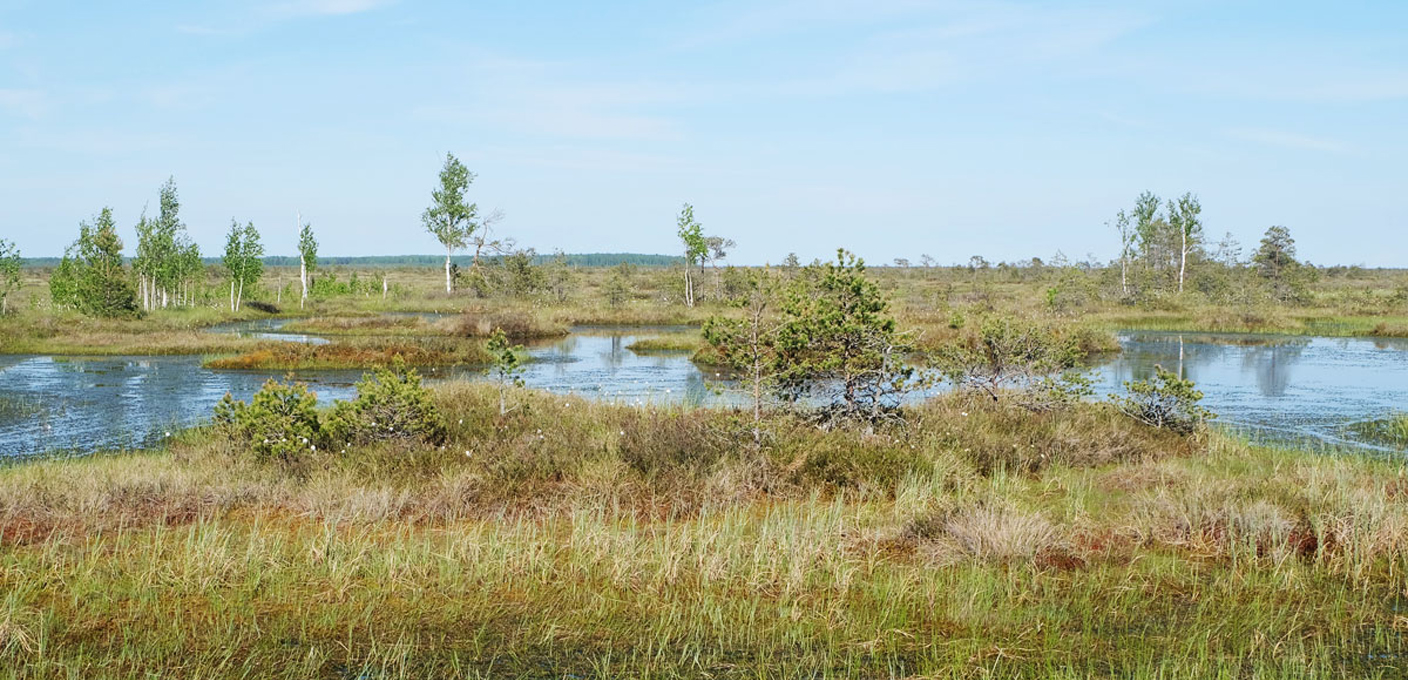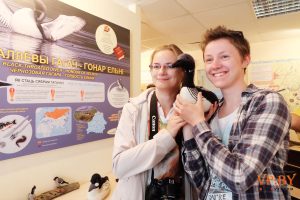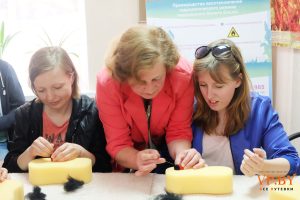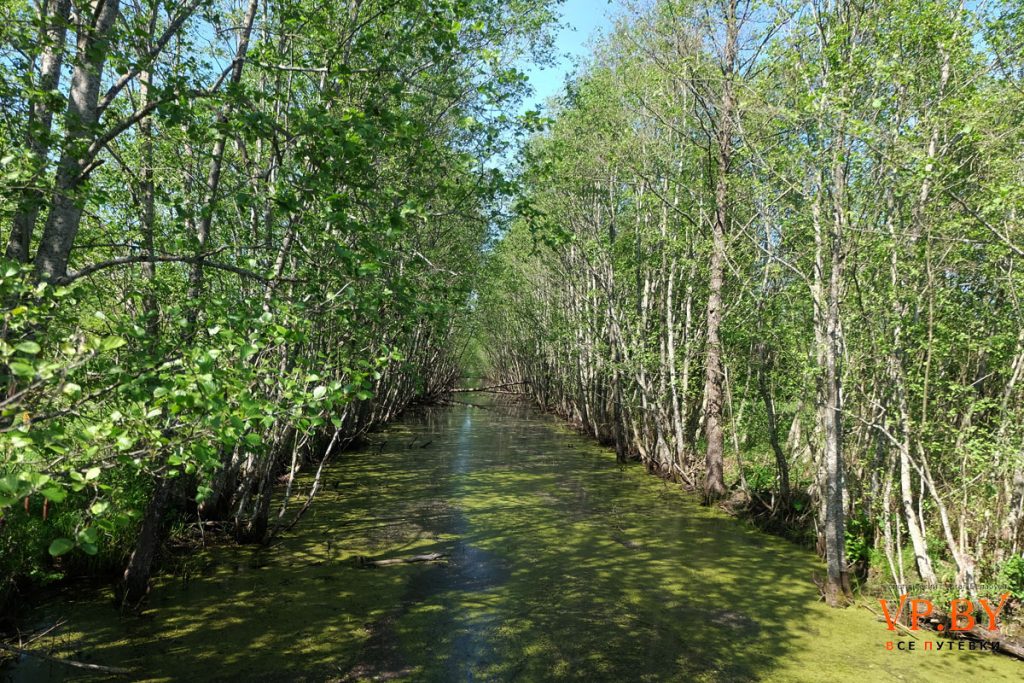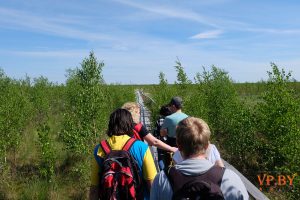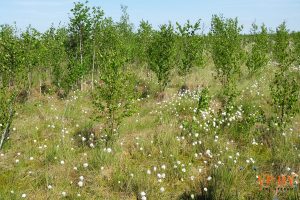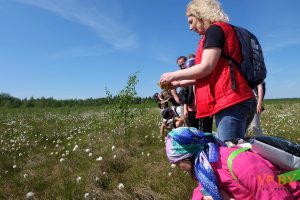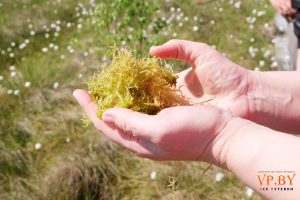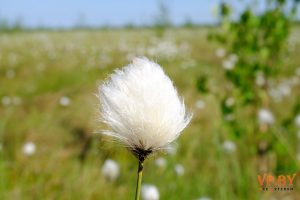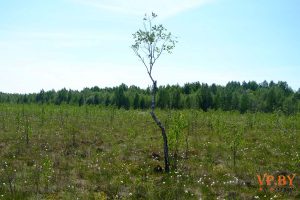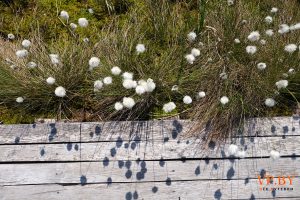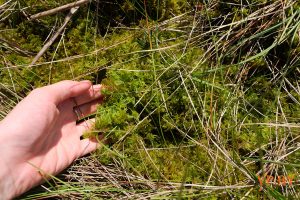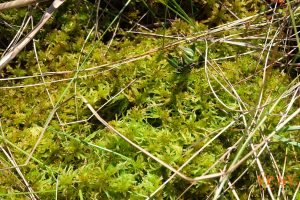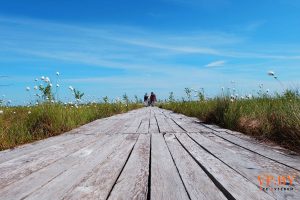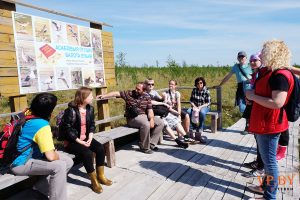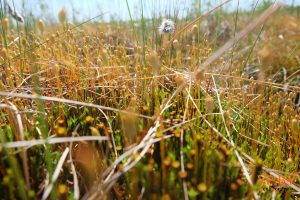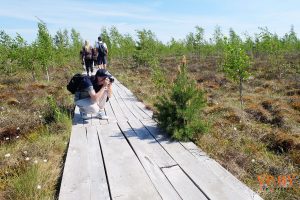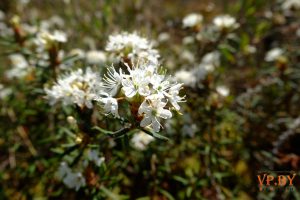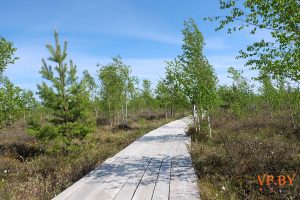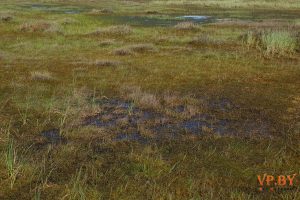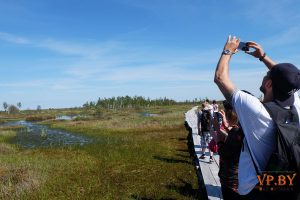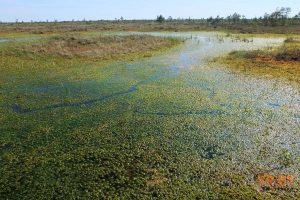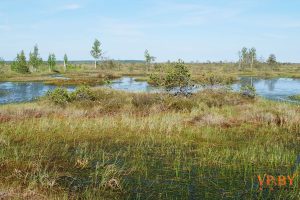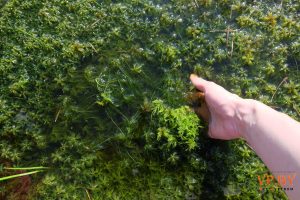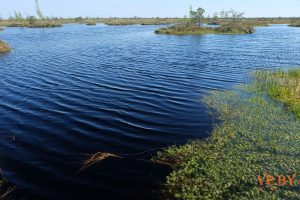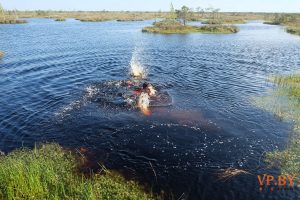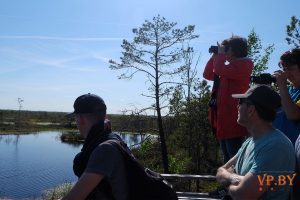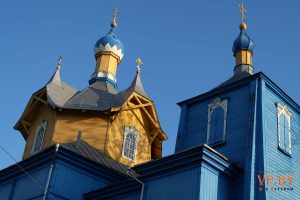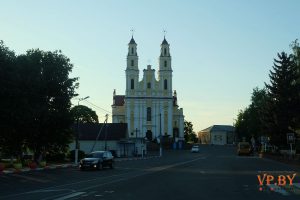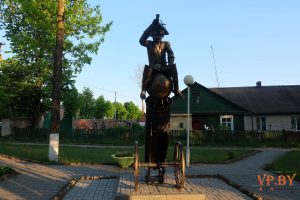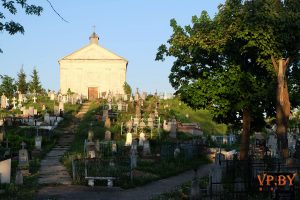A travel website VP.BY continues to explore unique spots in Belarus and various routes for one day trip. In this article you will find a one-day route to the heart of Vitebsk region and one of the main pearls of Belarus - Yelnya bog. A link to an original publication is here.
"To anticipate the photo report, I would say that after visiting the bog, love for Belarusian nature goes off the scale and it's hard to believe that such beauty is only 250 kilometers away from Minsk ..."
The route of our trip, where we went with a group of 13 people together with the company Walk to Folk (at the invitation of Karina Sitnik) looked like this: Minsk - Begoml - Miory - Yelnya - Sharkovshchina - Glubokoe - Minsk . At each of these spots along the road we explored some tourist attractions.
In Begoml, for example, after exiting literally 200 meters from the main road, we could see the ruins of the Church of All Saints, which dates back to the second half of the XIX century. After the war, the church suffered the fate of serving as a distillery, and during the Soviet era there was no thought of reconstruction, so only the facade of the church remained until nowadays. The condition of the church is depressing, because the parish has no money for reconstruction, although the ruins are on the list of historical and cultural heritage of Belarus.
In Miory town we observed the Church of the Assumption of the Virgin Mary - a monument of Neo-Gothic architecture built in 1907, in which you can find such rare icons like: the Mother of God Czestochowa (1878), Mother of God Roshantsova, Joseph and the baby (both beginnings of the XIX century). In front of the church there is a monument to an unborn child (author A. Dranets).
Visit center of Yelnya Reserve
Then we keep our way straight to the visit-center of the Yelnya Reserve, where Ivan, the director of the reserve, is already waiting for us.
The visit-center was opened in Miory in 2013 with the support of the EU / UNDP, and during this time it has been visited by a number of tourists from different countries. There you can get acquainted with the features of bogs, learn about local flora and fauna, listen to amazing stories about photo hunting and cranes counting during the migration season. All info stands in the visit-center are designed in Russian, Belarusian and English languages.
It is great to see so many interactive components in the information center: almost at every stand you can test yourself or use QR code to find out more information, solve funny riddles. And what is really amazing: you won’t find stuffed birds there, since all animal showpieces are made out of... felt!
Actually, we made some felt souvenirs too: Galina, the hostess of one local homestead, organized a workshop for us. We have created a ladybird, as Galina said - a symbol of happiness and luck! So in the end, we got not only photos to remember this trip, but a ladybird made of felt.
After the workshop and selfie with felt birds, we went to the path at the bog. The distance from Miory to the beginning of the path is 12 kilometers. Now I can say for sure that it is worth traveling 250 kilometers for seeing this place!
VP.BY note:
The national nature reserve Yelnya was found in 1968, since 2002 it has the status of the Ramsar site, and in 2005 it became the key botanical territory. In the bog complex there are 118 lakes, the largest of them is called Yelnya. You can find typical upland bogs here. The age of the bog is about 9 000 years, the area is 253.01 sq. km (slightly less than Minsk area!). It has an unusual form of a dome with two peaks, the altitude above sea level reaches 147 meters. As Ivan Borok said, if you come to moose islands at the end of February, you can see the domes of churches in Miory and Germanovichi. The length of the reserve from north to south is 20.5 km, from west to east - 16.6 km.
5 interesting facts about Yelnya bog:
- This is the largest upland bog in Belarus and one of the largest in Europe (the rating of the upland bogs in Europe: Flow Country (Great Britain) - 400 hectares, Polistovo-Lovatskaya bog system (Russia) - 134 433 hectares, Pallas Yllästunturi National Park (Finland) - 102 hectares, Bog of Allen (Ireland) - 95 800 hectares and Yelnya - 20 000 hectares).
- You will not find so much cranberry anywhere else as at Yelnya bog!
- Tundra plants and animals can be seen here.
- In spring and autumn there are more than 30,000 cranes.
- Eco-path at Yelnya is the widest and longest in Belarus.
Yelnya bog is a stopping point for birds that migrate from Scandinavia and Russia through Belarus for wintering in Israel and North Africa. About 50 pairs of cranes remain here for nesting. The Gray Crane is one of the largest birds in Europe: the wingspan exceeds 2 meters. Did you know that the cranes form pairs for the rest of their life?
More than 405 species of plants grow in the bog, 13 of them are listed in the Red Book. 8 Red Book insect species inhabit Yelnya as well as 150 bird species (24 of them are listed in the Red Book). There is even one rare mammal, which is also included in the Red Book - a badger. Here you can see such rare species of birds as the black-throated diver, the white partridge, and two species of predatory sundew (an insect hunter).
Walking along the path
The length of the path Ozeravki-Yelnya is 1530 meters. The road to it (about 800 meters) starts from the field and passes through the forest, where there is almost a wetland (especially after the rain: so don’t forget your rubber boots!).
There are three information stands on the road that tell you about the inhabitants of the bog. On the ecological path, by the way, there are no mosquitoes, but it is really sunny, so take your panama and sunscreen! The path passes through various types of marshes, and ends at the edge of the marshy lake, where brave ones can swim and attentive ones - watch the birds on the banks. The time for the trail (depending on your pace) is about 1.5 hours.
By the way, water from the bog is very clean and you can drink it! And one more surprising fact: a hectare of sphagnum produces two times more oxygen than a hectare of pine forest. So breathe until dizziness the purest air of Yelnya!
What else can you do at Yelnya bog:
Guests of the reserve have a great choice of routes and entertainments. You can watch the cranes in autumn and at the same time visit the local festival in September. A good idea is to attend a guided tour in the visit-center or choose any hiking route along the bog. Of course, there is a choice of different levels of complexity and accessibility.
On the way back we stopped at Sharkovschina and admired a predawn view of the Disna river and great folk architecture - the wooden Assumption Church of 1912. This church has never been closed, worship services are performed there regularly. In the church there are icons of the XVIII-XIX centuries and two bells, cast in Moscow in 1853 and 1856.
When driving through Glubokoe taste the most delicious condensed milk in Belarus and pay a visit to Baron Munchausen, which was set there in 2014. "Why is it there a monument to the famous Baron?” you might ask. Here is an answer: in the cemetery of Koptevka, in the center of Glubokoe, a cross was found, on which it is written that in 1878 Ferdinand and Wilhelmina von Munchausen were buried here. Local residents did not pay attention to the fact that the same Baron died in 1797, so they came up with a story and set a monument to the 600th anniversary of the city. A good legend!
In our opinion, Glubokoe deserves a separate trip, at least for two days. It is such a great place, where you can find the temples of Vilnius baroque style, the Constitution column, the Carmelite monastery and many other things which makes this Belarusian town so different from others.

Walk to Folk helps independent travelers to organize unique and inspiring holidays in Belarus. Karina Sitnik told VP.BY about the purpose and advantages of Walk to Folk tours:"Walk to Folk is a series of unique tours around Belarus, where tourists receive new knowledge and skills about culture and history and they are pleasantly surprised by the incredible nature around. Each of the trips usually includes two components: nature (from a day at a homestead in the forest to an active tour at Yelnya bog) and culture (traditional crafts or cooking workshops). If it is a group travel, it is usually consists of 6-10 participants, which is good for group communication and contact establishing. Each tour can be booked for an individual traveler to fit personal requests and travel itinerary. The participants of such trips are usually those people who are interested in history and culture of Belarus; perhaps, they travel quite a lot around the world and now willing to discover a new terra Incognita destination in Europe."
I want to note that the trip fulfilled my expectations: cultural and natural components of the route fit together very well and reveal you unexpected sides of Belarus. In case you are interested in visiting Yelnya or having any other active or cultural adventure, you can definitely ask Karina. Check out the next travel dates or book your tailor-made tour here, and explore our diverse country in a good company!

